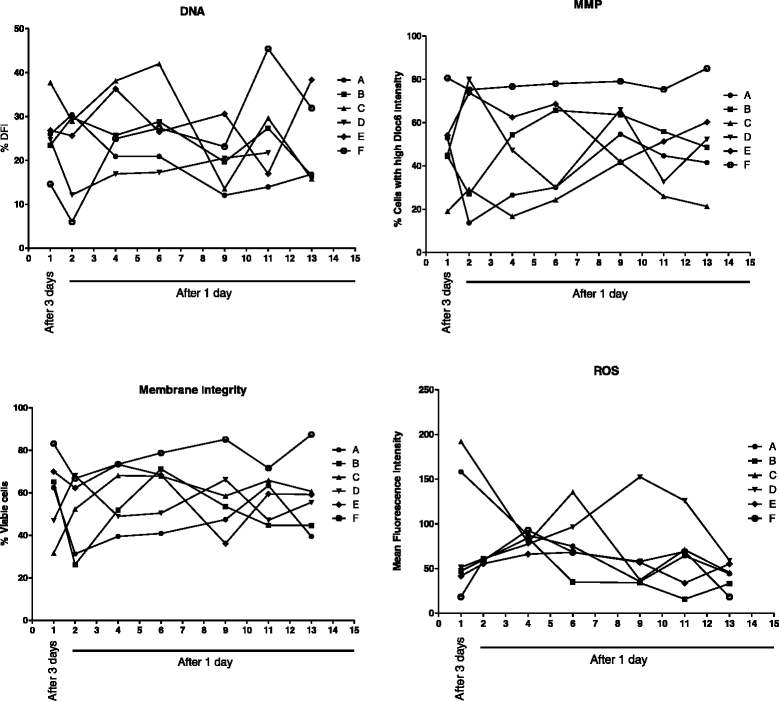Influence of ejaculation frequency on seminal parameters
- PMID: 25994017
- PMCID: PMC4445565
- DOI: 10.1186/s12958-015-0045-9
Influence of ejaculation frequency on seminal parameters
Abstract
Background: Several factors have been shown to influence semen parameters, one of which is sexual abstinence; a clinical criteria included in the semen evaluation to provide maximum sperm quality. The aim of the present study was to assess the effect of a daily ejaculation frequency on conventional and functional semen parameters.
Methods: Semen samples were collected daily over a period of two weeks of which every second sample per person was processed and analyzed according to the World Health Organization guidelines. Furthermore, mitochondrial function, intracellular reactive oxygen species production and sperm DNA fragmentation were evaluated by flow cytometry.
Results: Total sperm count and seminal volume per ejaculation declined and remained decreased for the duration of the daily ejaculation period. However, conventional parameters such as sperm concentration, motility, progressive motility, morphology, vitality and functional parameters such as sperm plasma membrane integrity, mitochondrial membrane potential and DNA fragmentation was not significantly affected and remained similar to the initial measurement throughout the daily ejaculation period. Despite intra- and inter individual variations, the average values of the basic semen parameters remained above the WHO (2010) reference values throughout the daily ejaculation period. Interestingly, a decreasing trend in intracellular ROS production was observed, although statistically not significant.
Conclusions: The study shows that an extended 2 week period of daily ejaculation does not have major clinical effects on conventional and functional seminal parameters.
Figures


References
-
- Robaire B, Hinton BT, Orgebin-Crist M-C. The epididymis. Knobil and Neill's Physiology of Reproduction. 2006;1:1071–148. doi: 10.1016/B978-012515400-0/50027-0. - DOI
-
- Amann R. A critical review of methods for evaluation of spermatogenesis from seminal characteristics. J Androl. 1981;2(1):37–58.
-
- Bedford JM. The status and the state of the human epididymis. Hum Reprod. 1994;9(11):2187–99. - PubMed
MeSH terms
Substances
LinkOut - more resources
Full Text Sources
Other Literature Sources

